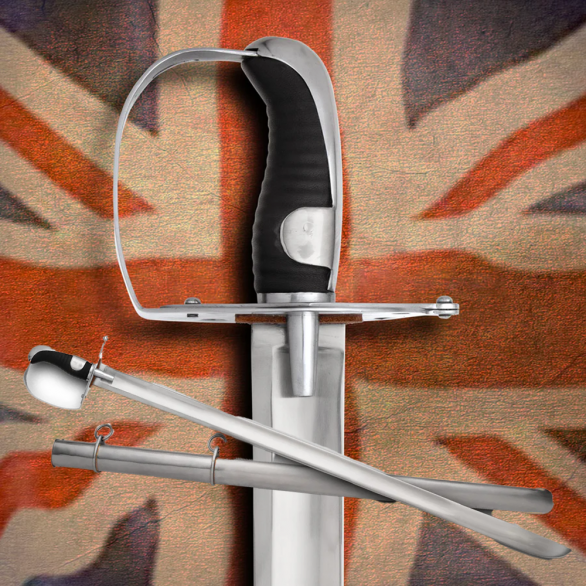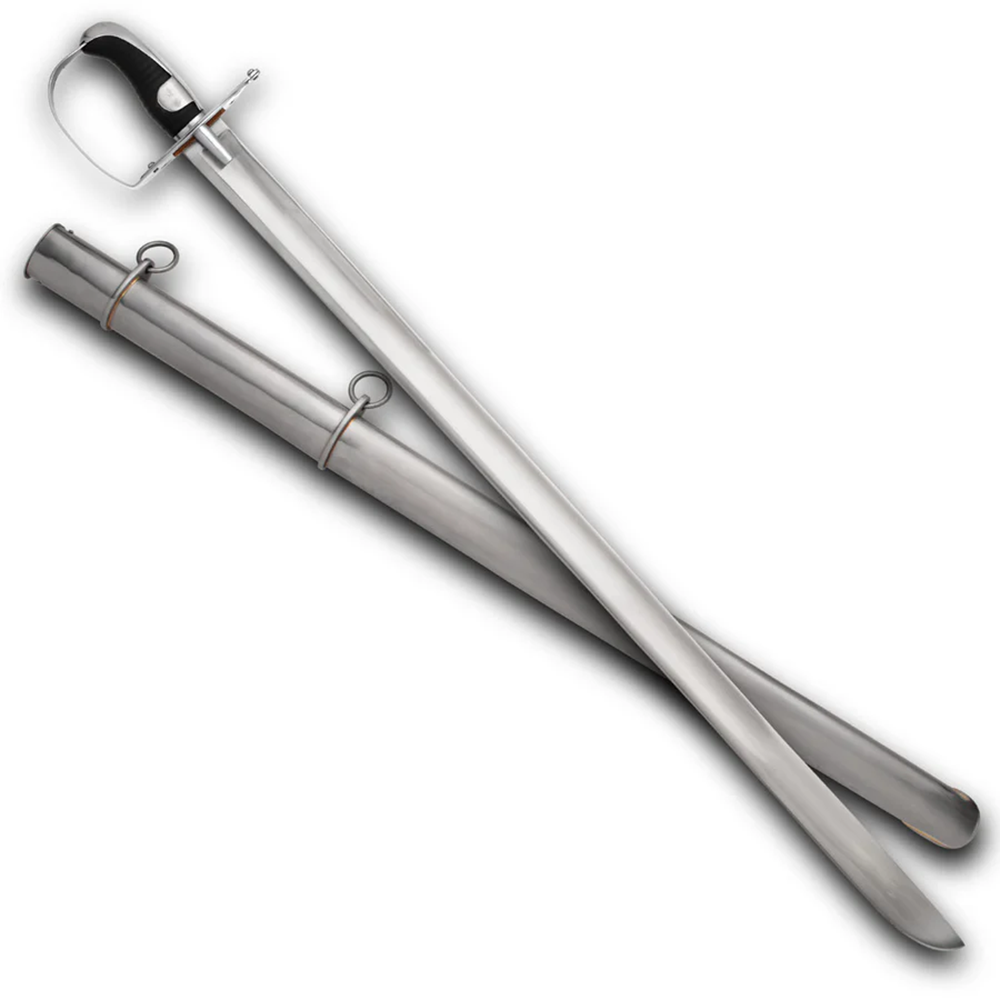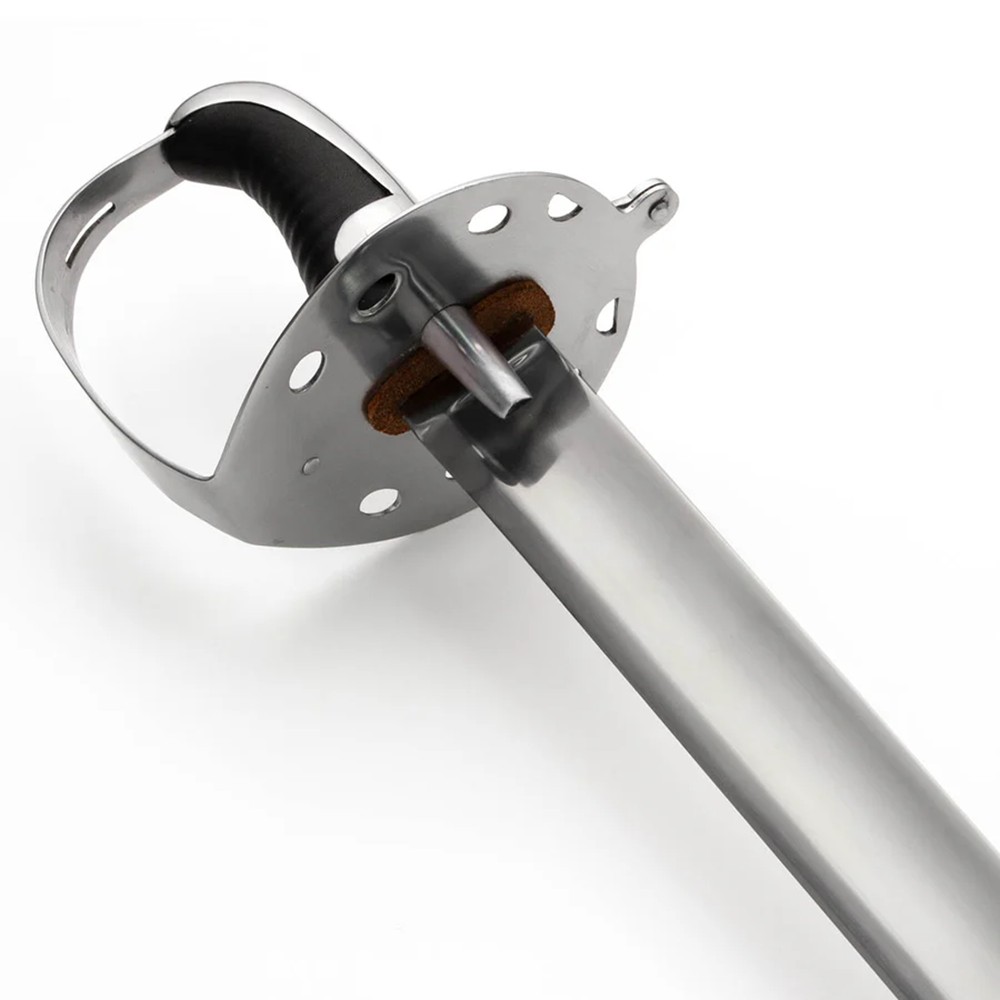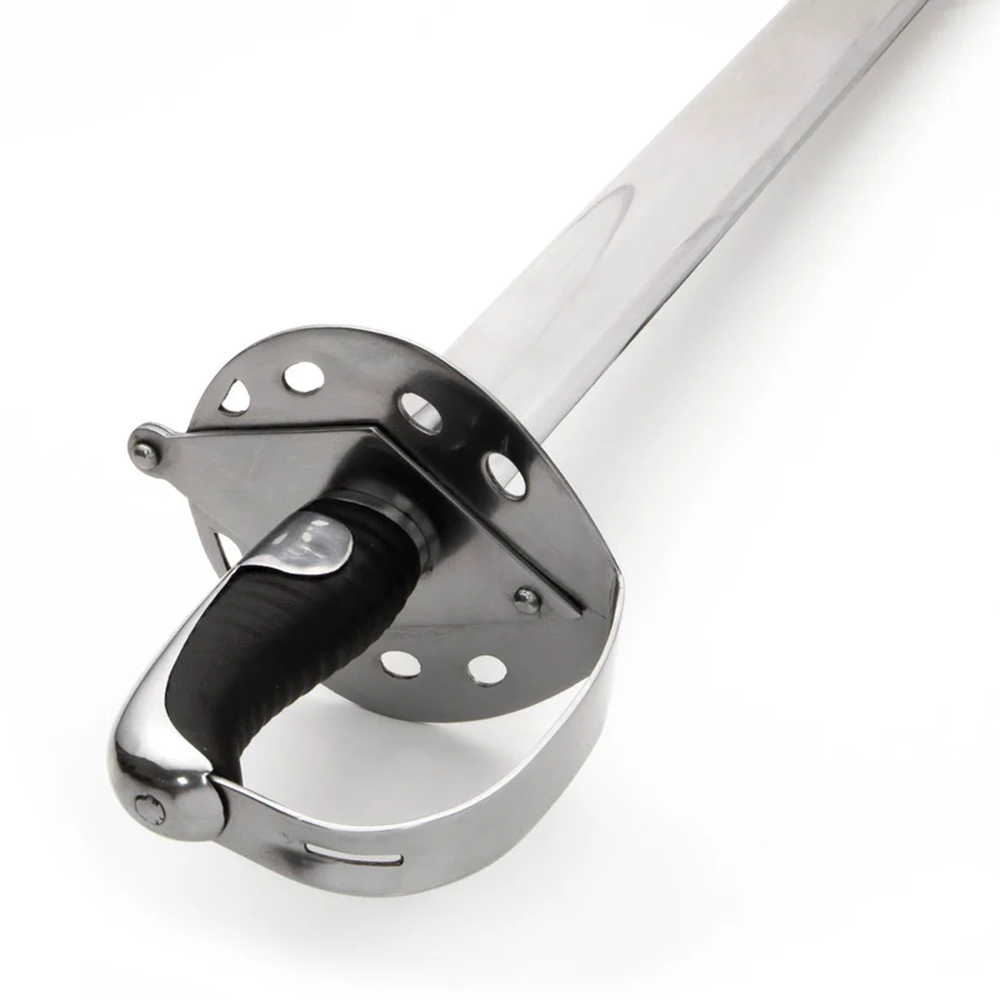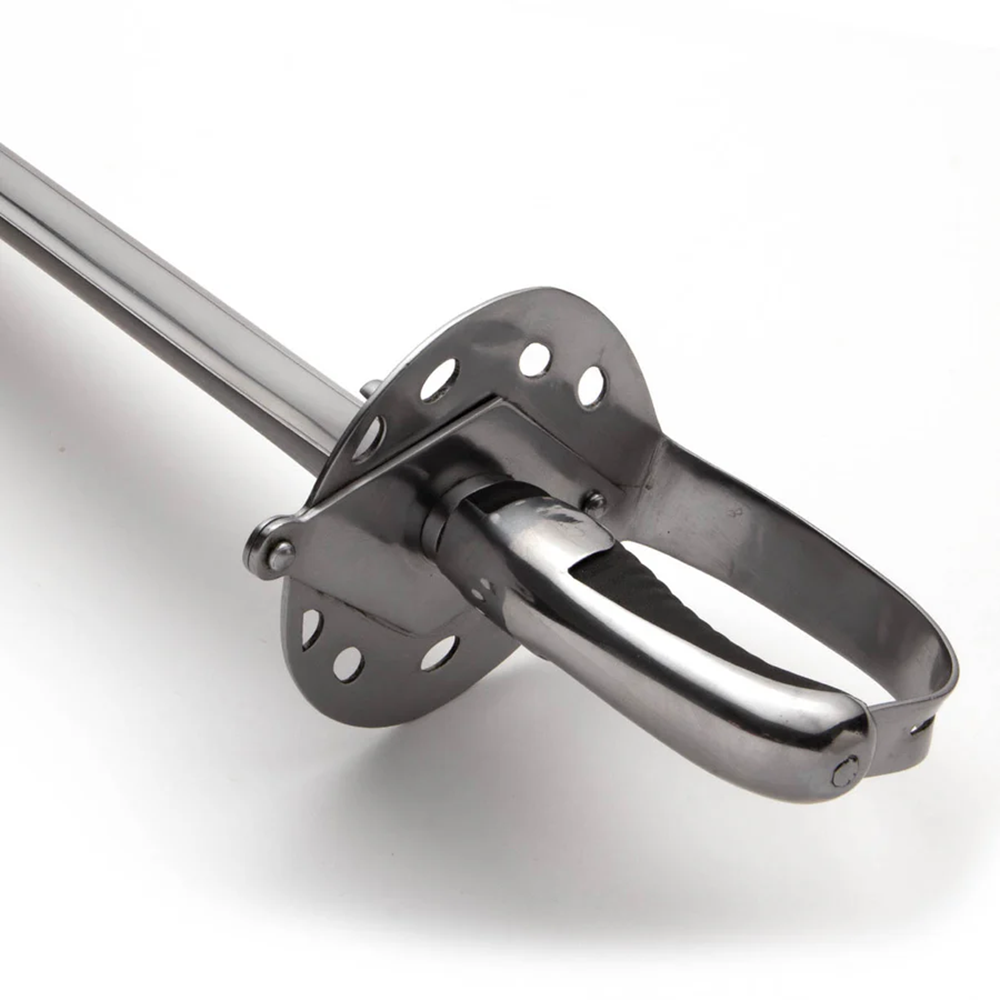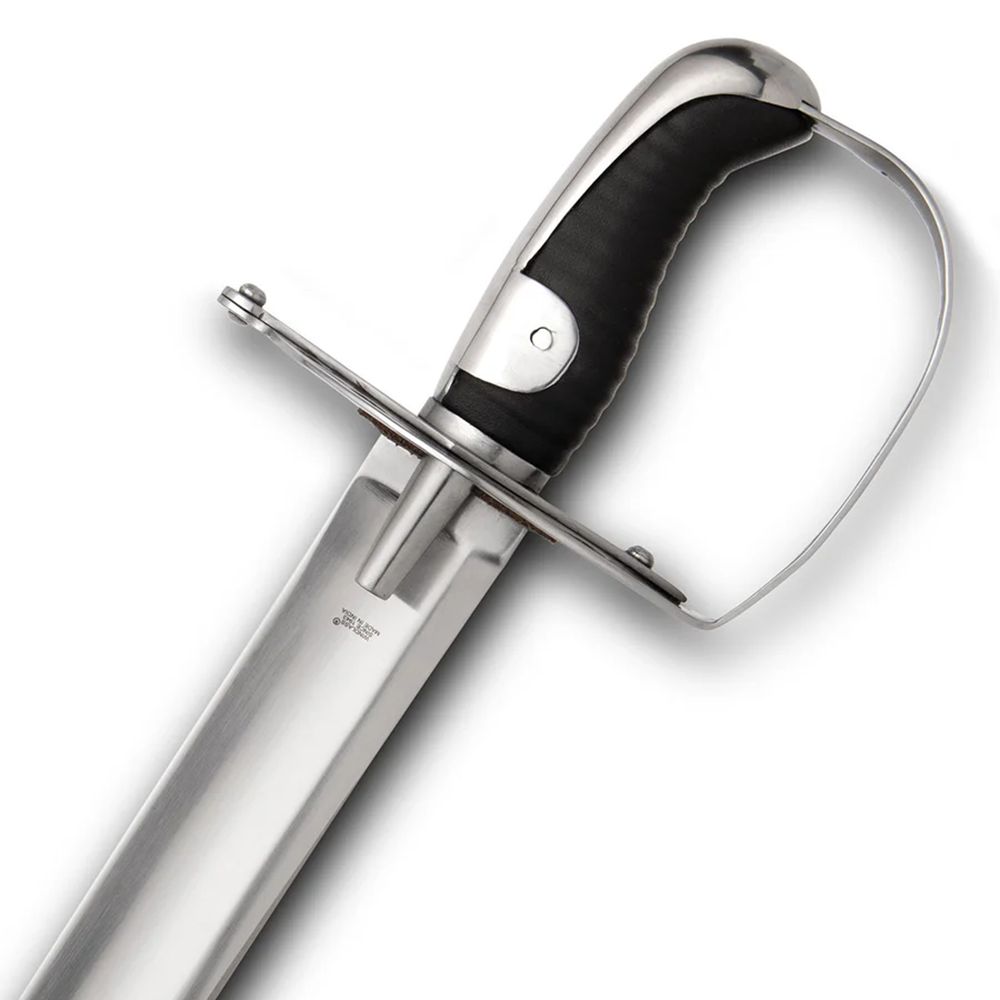Windlass Steelcrafts 1796 British Heavy Cavalry Saber
 Be the first one to write a review
Be the first one to write a reviewIN STOCK
FREE US SHIPPING
Probably one of the most brutally effective single handed 'meat axe' swords ever invented - and its not heavy.. You will either love it, or hate it - there is no neutral feeling for this one. Comes with steel scabbard.
1796 British Heavy Cavalry Sword - Replica
Also known as Sharpe’s Sword, and made famous by a mid-90’s British TV series, the 1796 heavy Cavalry Sword was wielded by the British Lifeguards, Royal Horse Guards, Dragoon Guards, and Dragoons through the Revolutionary and Napoleonic Wars. Directly copied from the Austrian Pallasch 1769 heavy cavalry sword, British cavalry officer John Le Marchant attentively recorded the weapons of the Austrian cavalry during the Low Countries Campaign in 1793-95, playing a significant role in recommending this deadly pattern to his superiors.
Notable for its brutal efficiency at the battles of Salamanca and Waterloo, this sword was an axe meat grinder of a blade on the field of battle. The 1796 heavy cavalry sword is technically a backsword with a straight blade that has one cutting edge and a spine (the "back") thickened for most of its length to add strength. Far from being a delicately maneuverable weapon, it gained favor as a bludgeoning instrument of destruction. The guard was often used as a knuckle duster, adding to the sword's terrifying versatility.
The blade is forged with a single broad fuller on each side, and the grip is made of ribbed leather. The basket guard features ears riveted through the tang of the blade, providing a secure connection between hilt and blade. The hilt combines a disc guard pierced with 2 semicircular and 6 oval holes, a single knucklebow, and two slim 2" long langets extending from the front of the guard to grip the scabbard's throat.
This replica arrives sharpened and includes a steel scabbard. It is a chilling reminder of the sheer brutality and horror experienced on the battlefield, where this sword was not just a weapon, but a harbinger of devastation and dread.


